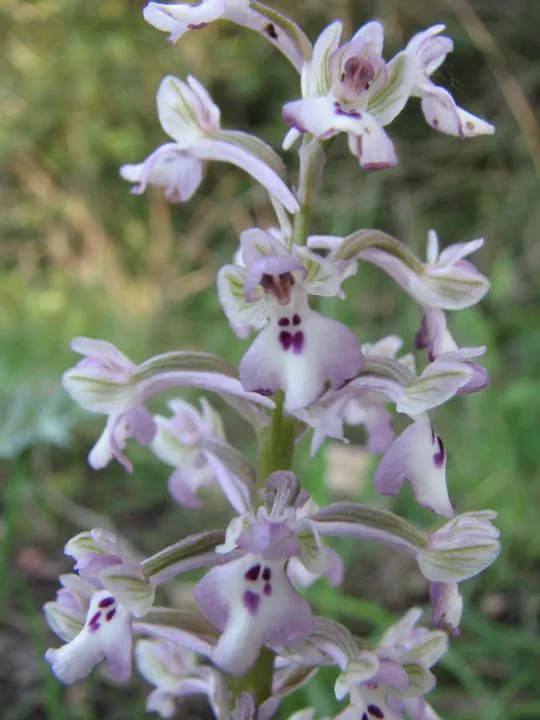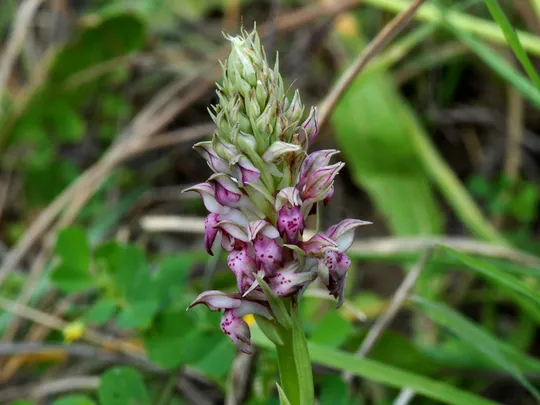Punctate Orchid, Small-dotted Orchid
Orchis punctulata
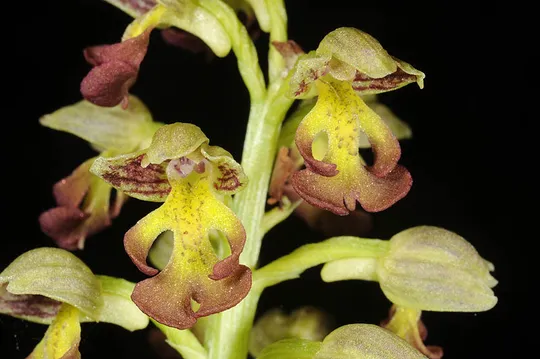
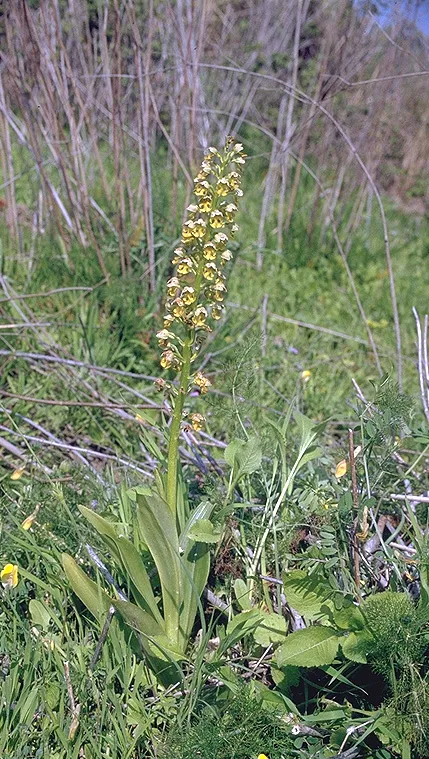
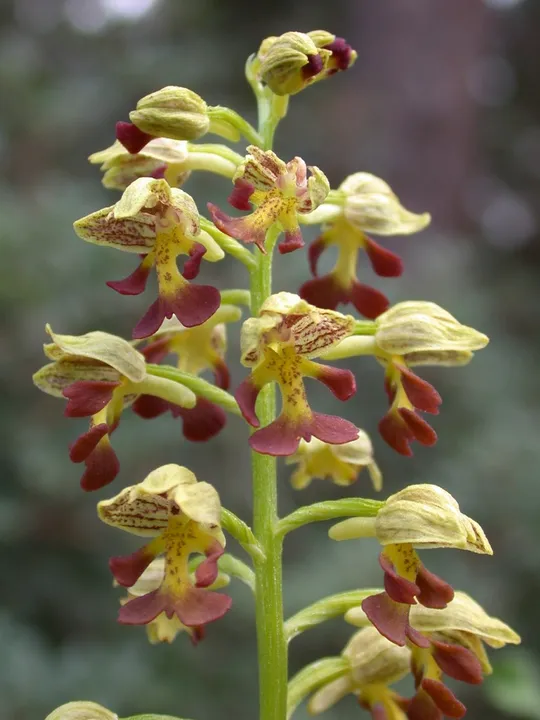
Orchis punctulata grows in six
regions in Israel: the Hula Valley, Upper Galilee, Lower Galilee, the Carmel,
Samaria and the Judean Mountains, a total of 13 recorded sites, but according
to estimates there are 20 sites. In the Hula Valley, it is known only from Sahlavim
Reserve near
Hurshat Tal. In the Upper Galilee,
it is found at four adjacent sites in the Hanita area. In 1998, Amir Sapir discovered
O. punctulata in the Lower Galilee, below Mount
Atsmon as a new species for the region. In the Carmel, it is known from the Hurshat
HaArba'im area, Mount Alon-Carmel Forest, Wadi Sfunim and Wolfson Hill in
Haifa. Gavri Sion first discovered the species in Wadi Kana in Samaria in 1997.
In the Judean Mountains, it was found only in the Cremisan grove in the 1980s.
According to Shir Vered a few plants were found in the late 1970s at Mitspe
Masu'a in the Judean Plains.
Calcareous soils in open woodland, scrublands, in
planted Pinus forests, in abandoned vineyards and even in fallow fields.
Orchis punctulata belongs to the genus
Orchis sect. Orchis. The species in this section are
characterized by its anthropomorphous flowers with a divided labellum with four
limb-like rounded lobes, and include: O. galilaea (grows in Israel),
O. purpurea (found throughout Europe), O. militaris (probably the Orchis
with the broadest global distribution – from Spain to central Asia), O. simia and more. Hybridization
among these species and between them and other species is known in nature.
·
Orchis punctulata is rare and the
number of its sites is generally small. New sites were discovered in regions on
which they were unknown in the past, but apparently, this does not indicate an
increasing numbers of regions and sites, but increased search efforts that
produced results.
·
The O. punctulata population size is usually from a few individuals to several dozen.
·
The small populations are reproductive
risks and also make the species vulnerable to random extinctions. Some of the
sites are located in accessible places near fields and places where there is human
activity.
·
O. punctulata is protected by
law. It grows in the Sahlavim
Reserve near Hurshat Tal
and is also protected in the Mount Carmel Reserve. The sites in the western
Upper Galilee near Hanita, where the largest population of the species is found,
are not located within the boundaries of a nature reserve.
·
O. punctulata is rare
throughout its entire range. It is in danger of extinction in Greece and is
included in the Red Book of rare and threatened plants of Greece (Phitos et al.
1995). Greece is the western edge of its range and that is probably the reason
why it is so rare and vulnerable (Phitos et al. 1995). In this area, the plant
disappeared as a result of overdevelopment and in other places it suffers from
grazing sheep herds. In Turkey, it disappeared mostly due to massive urban
development (Krestzschmar et al., 2007).
All the Orchis punctulata populations should be continuously monitored to study their long-term development trends. A
conservation plan should be developed with the KKL-JNF (Israel's forestry
agent) to preserve sites located in planted forests.
Orchis punctulata has a
fragmented and unusual distribution and is rare throughout its range. It grows in the eastern Mediterranean (Israel, Jordan,
Lebanon, western Syria, Cyprus, East Aegean Islands, Mediterranean Turkey and a
single site in Greece), the Black Sea coast (northern Turkey and southern
Russia – including the Crimean Peninsula) and the Caucasus and its surroundings
(Eastern Turkey, Southern Armenia,
Azerbaijan, northern Iran and northern Iraq). New O. punctulata populations are found from time to time in Israel and outside it,
evidence of the tiny seeds are dispersed by the wind and germinate in new
places.
Orchis punctulata is a rare orchid species
growing in mountainous regions in the Mediterranean region and in the Hula
Valley. It is found at a small number of sites and its populations are small. It
is a peripheral species and Israel is the southern limit of its range.
Phitos, D. Strid, A. Snogerup, S. and Greuter, W (eds). 1995. The Red Data Book of Rare and Threatened Plants of Greece. WWF. pp. 392-393.
Krestzschmar, H. Eccarius, W. & Dietrich, H. 2007. The Orchid Genera:
Anacampis, Orchis, Neotinea. EchinoMedia. 544 pp
Current Occupancy Map
| 1000 squre meter pixel | 5000 squre meter pixel | 10000 squre meter pixel | |
|---|---|---|---|
| number of observations | 0 | 0 | 0 |
| in total pixels | 0 | 0 | 0 |
| Family | orchidaceae |
| Classification | On the endangered species list |
| Ecosystem | Mediterranean |
| Chorotype | Eastern Mediterranean |
| Conservation Site | Hanita Junction fields, Sahlavim Reserve near Hurshat Tal |
| Rarity |
1
2
6
|
|---|---|
| Vulnerability |
0
1
4
|
| Attractiveness |
0
2
4
|
| Endemism |
0
0
4
|
| Red number |
1
3.2
10
|
| Peripherality | N |
| IUCN category | DD EW EX LC CR EN VU NT |
| Threat Definition according to the red book | Vulnerable |
 Based on:
Based on:
